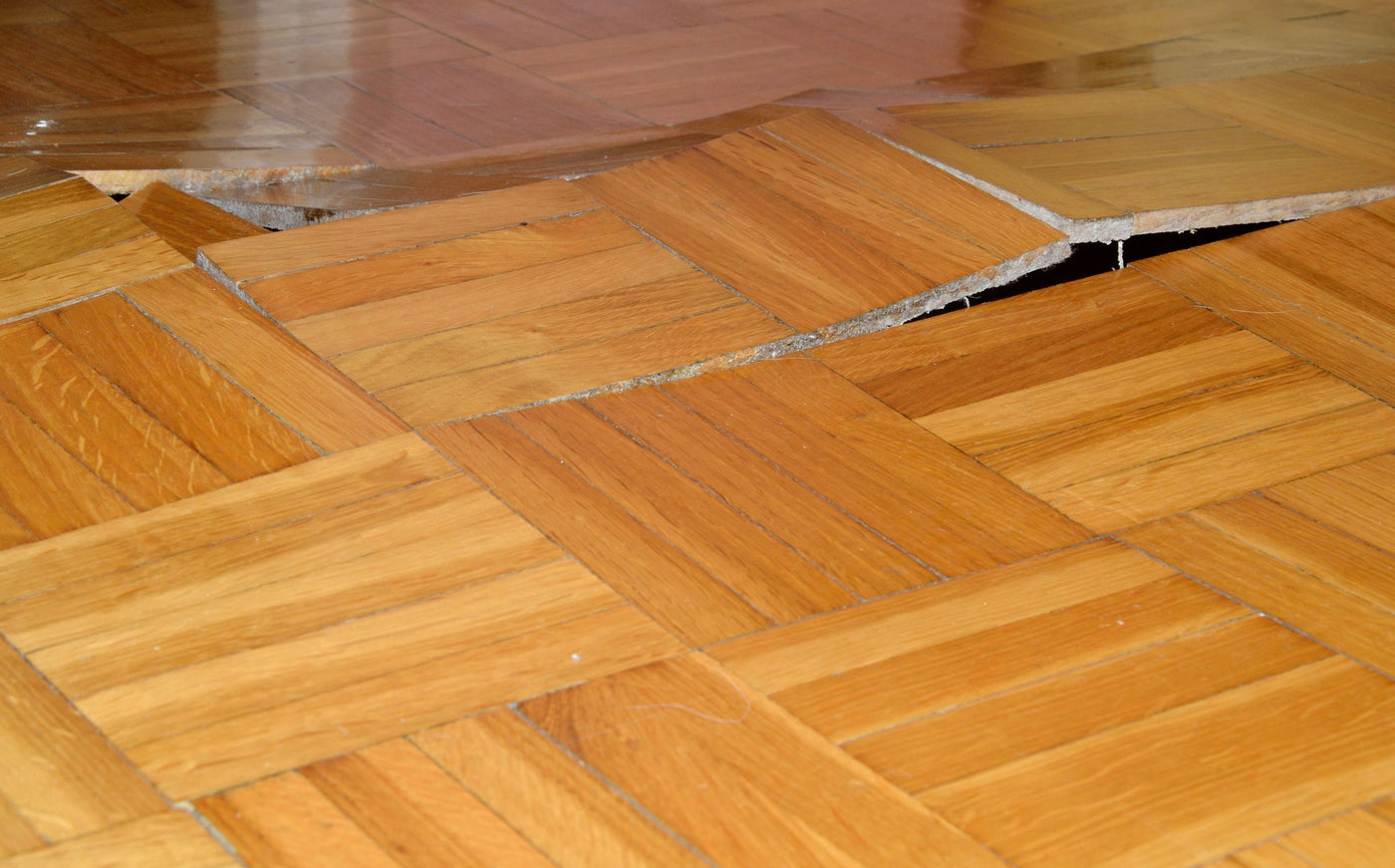Your Cart is Empty

Ah, winter. It’s full of soft snowfalls, warm drinks, holiday cheer, and sometimes burst pipes? Any Northerner will tell you that it gets cold this time of year, and that cold causes metal pipes, if old or improperly winterized, to rend from the wall, and occasionally break. While this might seem inconsequential, firsthand experience with a broken pipe will thoroughly convince you otherwise. Gallons upon gallons of water will end up soaked into your floor, which certainly makes for a lovely surprise to wake up to.
Of course, you know that excess water can be damaging to certain floor types, such as hardwood flooring and engineered hardwood flooring (if you have waterproof flooring, you’re relatively off the hook, as far as your floors are concerned). Wet wood floor quickly warps, which leaves ugly gaping between the boards and drastically reduces the viable life of your hardwood. Is there anything you can do after disaster strikes?
Of course, there is! E Hardwoods, a vendor of everything from solid hardwood flooring to waterproof wood-look flooring, breaks down first aid for soaking floorboards below.
When dealing with a burst pipe, the clock is ticking. The longer the water spills onto and sits atop your hardwood, the more water the floor takes on, and the greater the likelihood that you’ll need to replace the boards. Even if it’s one in the morning when you discover this burst pipe, you need to act immediately.
Aside from quick action and closing off the broken pipe, what else can you do to save your precious wooden investment?
We’re an online flooring shop well-stocked with all the best brands and flooring types. Peruse our online selection here or contact us with any questions.